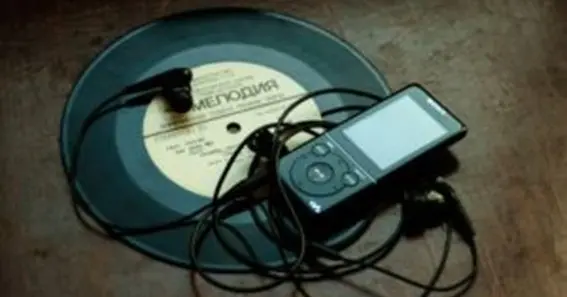What does EP stand for? It is “extended play,” referring to a musical release that is longer than a single but shorter than a full album, typically containing 4-6 tracks. EP music describes a type of music recording. EP is a format between a song and a full-length album. Most musicians use this method to plan their careers by offering them a less restricted and more flexible manner to showcase their music. In this article, we discuss what does ep stand for and more about it.
What Does EP Stand For?
EP music stands for Extended Play, referring to a musical release that is longer than a single but shorter than a full album, typically containing 4-6 tracks. An EP is useful for emerging and established artists since it includes more tracks than a single but fewer than an album. Most modern EPs include 15–30 minutes and eight tracks. Artists may release a lot of songs without releasing a record with this format. EPs can introduce new music, test new styles, or give listeners something to look forward to between album releases. Shorter EPs are less cohesive and more diversified than full albums. They demonstrate an artist’s music process. This makes what does ep stand for clearer for you.
Now you know what ep stands for in music, next to comprehend EP music, you must study its history, structure, and impact on the music industry. This approach benefits artists and fans, making it a versatile weapon in today’s music industry. This overview explains EPs and how they function.
Also Read : What Does Third Person Limited Mean? Understanding Third Person Limited
History Of EP

A solution to fit more music on a 45 RPM record was the EP in the 1950s. People released early EPs to release music that didn’t fit on albums or accumulate hits. EPs were 45 RPM 7-inch vinyl recordings. About four tracks for each EP. People loved this approach in the UK, where it became the music industry standard.
EP style evolved with the music industry. In the 1980s and 1990s, CDs, digital files, and streaming services further altered the EP. This made music creation and distribution easier for musicians.
Also Read : What Is Nearpod? Use Of Nearpod In Interactive Lessons
Purpose And Usage Of EP
EPs can showcase new music, preview a new album, or enable musicians to experiment with different sounds and ideas without committing to an album. Artists utilize them smartly to stay current and interact with their audience. New performers might gain followers and test the waters with an EP before releasing a full album. An EP may keep audiences interested between albums and let famous musicians showcase new musical approaches. EPs let musicians adapt swiftly to new events and trends.
Length And Structure
An EP typically comprises three to eight tracks and lasts 15–30 minutes. This music, between an album and a single, has a lot of information that’s easy to understand. EPs are brief and easy for artists and fans to use. Their music is extensive without the commitment of a whole LP.
The layout of an ep music meaning might vary. Some EPs have a common topic or style that unites the tracks. Other styles and concepts may be more diversified. Because of this, artists may tailor the EP style to their vision and ambitions.
Artist And Industry Perspective
Creating EPs is cheaper and faster for artists than creating entire LPs. They need fewer resources for manufacturing and marketing. This makes them ideal for single artists and budget-conscious customers. EPs help the music industry promote artists and keep fans engaged.
EPs allow artists to experiment and be courageous. EPs help musicians experiment with different sounds and genres without committing to a full album. Because they are shorter and cheaper to build.
Popular Genres For EP

EPs are popular in rock, pop, hip-hop, and techno. They are prevalent in hip-hop and electronic dance music, as musicians release new songs often. EPs allow musicians to release new music rapidly and stay current because these genres change so frequently.
Pop and rock bands and solo artists utilize EPs to showcase their talent and get followers. EPs are popular for remixes, collaborations, and experimental music in electronic music. Hip-hop artists release EPs with mixtapes, collaborative ventures, and themed albums.
Impact on Fans and Listeners
Fans prefer EPs because they allow them to hear new music before LPs. They engage listeners with more frequent and diverse listening. EPs allow listeners to hear new music and understand how an artist is evolving. EPs help new fans start. EPs are a better method to sample a musician’s music because they include fewer tracks and last less.
Conclusion
By now you have a clear concept of what does ep mean , what does ep stand for and that EPs are crucial to the music industry since they benefit artists and listeners. Artists may release new songs, attempt new styles, and stay in the market owing to them. EPs offer fresh music without the wait for a full album. As digital music evolves, making song and album switching easier, EPs may become more popular. Understand EP music to discover how vital it is for business and how artistically flexible it is in today’s music industry. In above we discuss about what does ep stand for and explore more about it.
FAQ
What is the difference between an EP and an LP?
EPs include 3-8 tracks and are shorter than LPs. LPs have more songs and last longer.
Why do artists release EPs instead of albums?
EPs are cheaper and easier to manufacture, so musicians may release more tracks and experiment with styles.
How long is an EP compared to a single?
EPs often have 15–30 minutes of music, while singles typically have one or two tracks lasting a few minutes.
Are EPs less cohesive than albums?
EPs sometimes don’t fit together like LPs. They reveal an artist’s creative process without an album’s subject.
Can EPs be successful commercially?
Many EPs have done well in the market, helping musicians launch and maintain careers by featuring fresh and exciting music.
Sources:
https://blog.groover.co/en/tips/what-is-an-ep-and-why-is-it-the-best-choice-for-emerging-artists/










